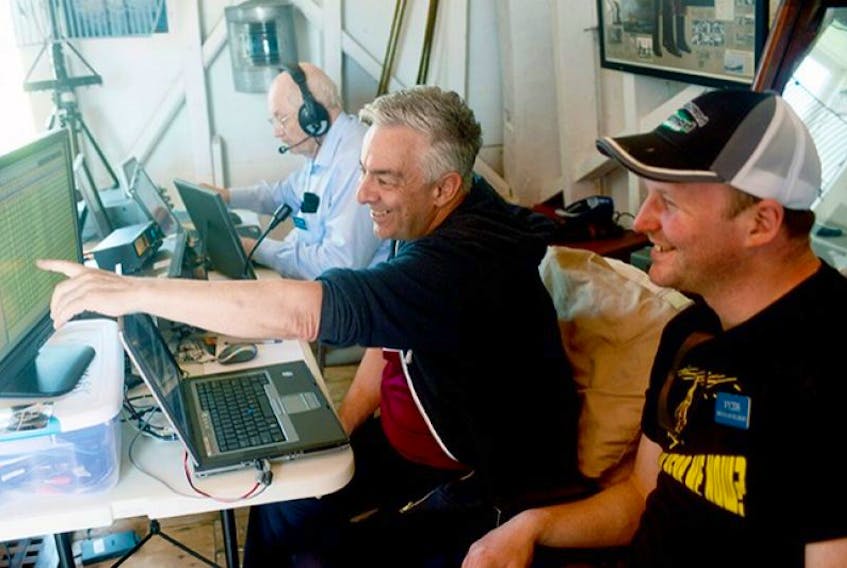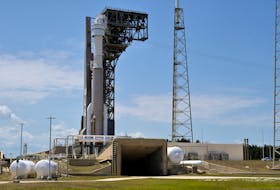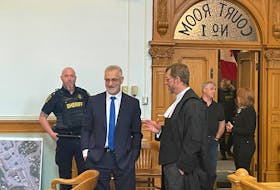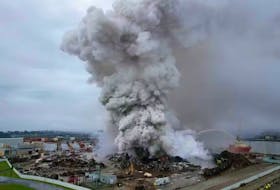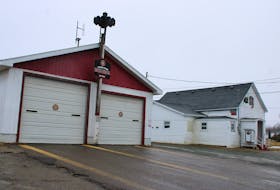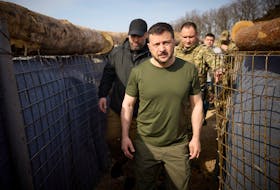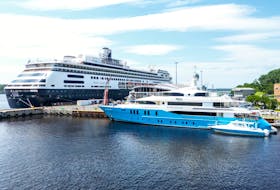SOURIS – The emergency preparedness of P.E.I.’s amateur radio operators was put to the test this weekend.
Members of several radio clubs in the Maritimes took part in the Field Day event organized by the Charlottetown Amateur Radio Club at the Souris Lighthouse.
Club member George Dewar said the site made contact with more than 125 other operators throughout the United States and Canada during the 24-hour emergency simulation.
“It’s temporary antennas and temporary installation, we could get extra points if we ran the radios off a generator but it makes too much noise,” said Dewar, noting the location was excellent for making contact with U.S. operators. “What we’re doing here is radiating over salt water. That makes your radio signal much more effective.”
Field Day stretches back to the 1930s and is one of the most anticipated days for HAM radio operators, with thousands setting up temporary stations to simulate emergency conditions while attempting to make as many contacts as possible.
RELATED: Amateur radio by the numbers
The event is jointly sponsored by the American Radio Relay League and Radio Amateurs of Canada.
While most today rely on cell phones and internet communications, the goal of HAM radio from a public interest standpoint is to provide effective means of communicating during natural or man-made disasters.
“If cell towers go offline or power fails, HAM radio operators can still get on the air and pass messages and even vital information,” said Charlottetown member Brent Taylor.
Even in the absence of emergencies, HAM radios are often used by organizers during marathons, fundraisers and other pre-planned activities.
For many others, the unique form of networking has become a passion.
Bernie Cormier, president of the Tri-County Amateur Radio Club, was also in Souris for the event.
Even before officially starting Field Day, Cormier was able to make contact with a number of individuals from Cuba, Spain, Lithuania, France, Berlin and Belarus.
Rather than making HAM radio obsolete, the group was quick to point out advantages the internet has brought into the tradition.
HAM radio prefixes and IDs can be searched on websites to find more information on operators they’ve made contact with.
It will also often include pictures of the individual, email addresses and contact info.
“(The internet) just makes it a heck of a lot more interesting. If you make a contact, you can look them up and if they choose to they can have a whole lot of information,” said Cormier.
Bob Pratt, a Connecticut resident who lives in Murray Harbour North for half the year, also lent some expertise during Field Day.
Having been licensed as an operator since 1992, Pratt said he’s hoping to eventually move his radio setup up to P.E.I.
Aside from the salt water, Pratt said many would see the province as a unique place to make contact with.
“I’d rather operate up here,” said Pratt. “If someone makes contact with a VY2 prefix here, they’re a lot more likely to come back than if they hear KD1, which is my Connecticut prefix.
“It’s a less often reached call sign and it’s an Island… there’s many fewer HAMs up here so it’s harder to make contact with.”
SOURIS – The emergency preparedness of P.E.I.’s amateur radio operators was put to the test this weekend.
Members of several radio clubs in the Maritimes took part in the Field Day event organized by the Charlottetown Amateur Radio Club at the Souris Lighthouse.
Club member George Dewar said the site made contact with more than 125 other operators throughout the United States and Canada during the 24-hour emergency simulation.
“It’s temporary antennas and temporary installation, we could get extra points if we ran the radios off a generator but it makes too much noise,” said Dewar, noting the location was excellent for making contact with U.S. operators. “What we’re doing here is radiating over salt water. That makes your radio signal much more effective.”
Field Day stretches back to the 1930s and is one of the most anticipated days for HAM radio operators, with thousands setting up temporary stations to simulate emergency conditions while attempting to make as many contacts as possible.
RELATED: Amateur radio by the numbers
The event is jointly sponsored by the American Radio Relay League and Radio Amateurs of Canada.
While most today rely on cell phones and internet communications, the goal of HAM radio from a public interest standpoint is to provide effective means of communicating during natural or man-made disasters.
“If cell towers go offline or power fails, HAM radio operators can still get on the air and pass messages and even vital information,” said Charlottetown member Brent Taylor.
Even in the absence of emergencies, HAM radios are often used by organizers during marathons, fundraisers and other pre-planned activities.
For many others, the unique form of networking has become a passion.
Bernie Cormier, president of the Tri-County Amateur Radio Club, was also in Souris for the event.
Even before officially starting Field Day, Cormier was able to make contact with a number of individuals from Cuba, Spain, Lithuania, France, Berlin and Belarus.
Rather than making HAM radio obsolete, the group was quick to point out advantages the internet has brought into the tradition.
HAM radio prefixes and IDs can be searched on websites to find more information on operators they’ve made contact with.
It will also often include pictures of the individual, email addresses and contact info.
“(The internet) just makes it a heck of a lot more interesting. If you make a contact, you can look them up and if they choose to they can have a whole lot of information,” said Cormier.
Bob Pratt, a Connecticut resident who lives in Murray Harbour North for half the year, also lent some expertise during Field Day.
Having been licensed as an operator since 1992, Pratt said he’s hoping to eventually move his radio setup up to P.E.I.
Aside from the salt water, Pratt said many would see the province as a unique place to make contact with.
“I’d rather operate up here,” said Pratt. “If someone makes contact with a VY2 prefix here, they’re a lot more likely to come back than if they hear KD1, which is my Connecticut prefix.
“It’s a less often reached call sign and it’s an Island… there’s many fewer HAMs up here so it’s harder to make contact with.”
Amateur Radio numbers
- There are more than 50,000 amateur radio licensees in Canada, including 250 in P.E.I.
- More than 35,000 amateur radio operators in Canada and the United States participated in last year’s Field Day event
- There are more than 2.5 amateur radio operators worldwide

